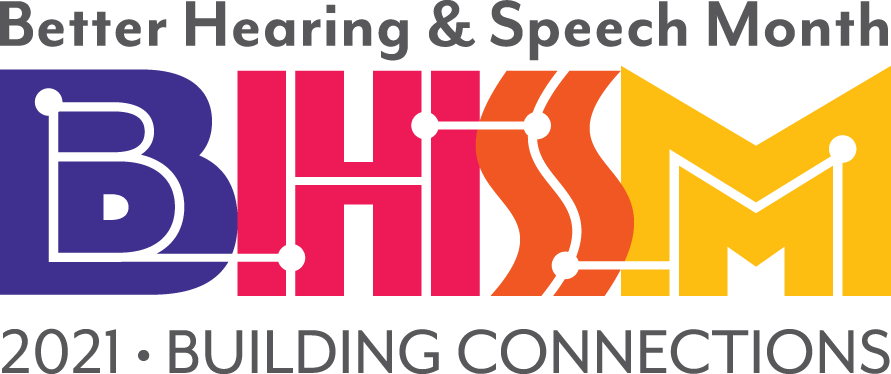The American Speech, Language, Hearing Association provides resources to help promote the fact that May is Better Hearing and Speech Month. Use these resources to help spread the word about how to help others improve communication abilities.
Author Archives: chris.bugaj
Repeating Specific Words During Shared Reading to Teach Language Using Augmentative/Alternative Communication
Reading together can be a great opportunity to model language using augmentative/alternative communication. When reading a story together, communication partners (you!) can help a student learn vocabulary by using the AAC yourself to comment on what’s happening in the story, ask an open-ended question about the story or picture in the story, and then respond to the question or whatever the student expresses.
Focusing on specific words provides repetition necessary to learn how they are used.
The following is an example created by Speech-Language Pathologist Jessica Cerovich who models language using an AAC application while reading a book. The words focused on are Like and Don’t Like.
-
-
Comment on what is happening such as “I like” and “don’t like.”
-
Ask an open ended question like “What do you like?”
-
Respond when the child communicates anything.
-
Accessibility checkers to learn how to design materials for everyone
Most educators do not have a background in designing and creating educational materials with accessibility in mind. An accessibility checker will catch design mistakes and guide educators through a process of how to fix them. Consistent use of an accessibility checker consistently helps people learn how to design the next material with less errors. Educators will learn from their mistakes and begin to anticipate what is needed to mitigate errors. The following video explains how to use Grackle Docs to check files created using Google Suite for accessibility errors.
Cedar Lane’s Picture Communication Playground Boards
Educators at Cedar Lane Elementary School created signs near the playground to help individuals learn language. Designed using the most frequently used words (aka Core Vocabulary), learners point to symbols to make phrases as a form of expression. Peers of those who are learning language using augmentative/alternative communication access the symbols as well to help their friends learn what different words mean and how they are used.
Questions To Ask When Considering Educational Materials
The most efficient way to provide accessible educational materials to students is to find materials that are already created that way! Why create them yourself when someone has already done the work for you? LCPS works to ensure curricular materials that are provided as resources to educators are already accessible. When reviewing materials, educators can ask themselves a series of design questions to determine if the materials are accessible. These questions can include the following:
- If there is text, can it be read aloud by a text to speech application?
- Can items be magnified or enlarged?
- Can the background colors be changed to provide varied contrast?
- When audio plays, is there a corresponding text representation of that sound (ie, captions)?
- When video plays, is there a corresponding optional audio track that can be played, describing the action in the video (ie, video descriptions)?
- When images are presented, do they have corresponding text describing the image and, if so, can this text be presented in audio format (ie, ALT-Tags)?
- Does the user interface have multiple input options to allow for access by someone who uses a switch?
- Is it portable, moveable, adjustable, or mountable to allow for access by someone in a wheelchair?
An Introduction to Augmentative/Alternative Communication from The Virginia Department of Education’s Training and Technical Assistance Centers Assistive Technology Network
The Virginia Department of Education’s (VDOE) Training and Technical Assistance Centers (TTAC) have created a training site related to learning language with augmentative/alternative communication (AAC). The site shares information related to getting started, selection, and the implementation of AAC. The site busts common myths related to AAC by refuting them with evidence and research.

Banner for the The Virginia Department of Education’s Training and Technical Assistance Centers Assistive Technology Network
Adjust screen brightness or color based on time of day
The brightness or whiteness of a screen can impact how easy it is to experience content including text. Many devices, including student Chromebooks, have a setting which allows for automatically adjusting colors based on different factors, including time of day.
Which words do we focus on when teaching language using augmentative/alternative communication?
The most frequently used words are known as Core Vocabulary words. Approximately 80% of the words spoken are from a small set of 350 words which are mostly pronouns, verbs, prepositions, conjunctions, adjectives, and adverbs. They are usually not nouns.
Focus instruction on teaching core vocabulary words by modeling their use.
It may take some time for a child to learn how to use these words. The child will likely need to experience these words being modeled many, many times before using it on the AAC independently. This video provides an explanation with examples:
Listen to text on your mobile device
Some mobile devices have a feature that allow you to listen to text displayed on the screen. Whenever you need or want, choose to have text read aloud.
How to Use Spoken Content on an iOS Device
How To Use Select To Speak on an Android Device
Innovation Born From Inclusive Technology
This video focuses on how designing instruction for students with disabilities leads to strategies used by the masses and explains how accommodations can be used as a roadmap for designing inclusively for all learners.




